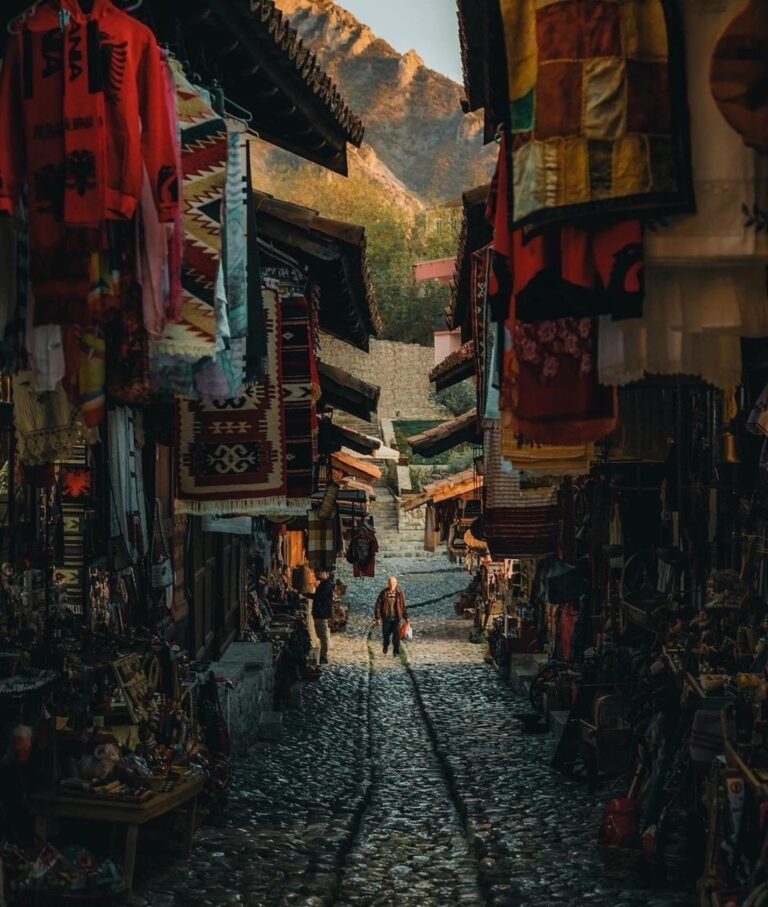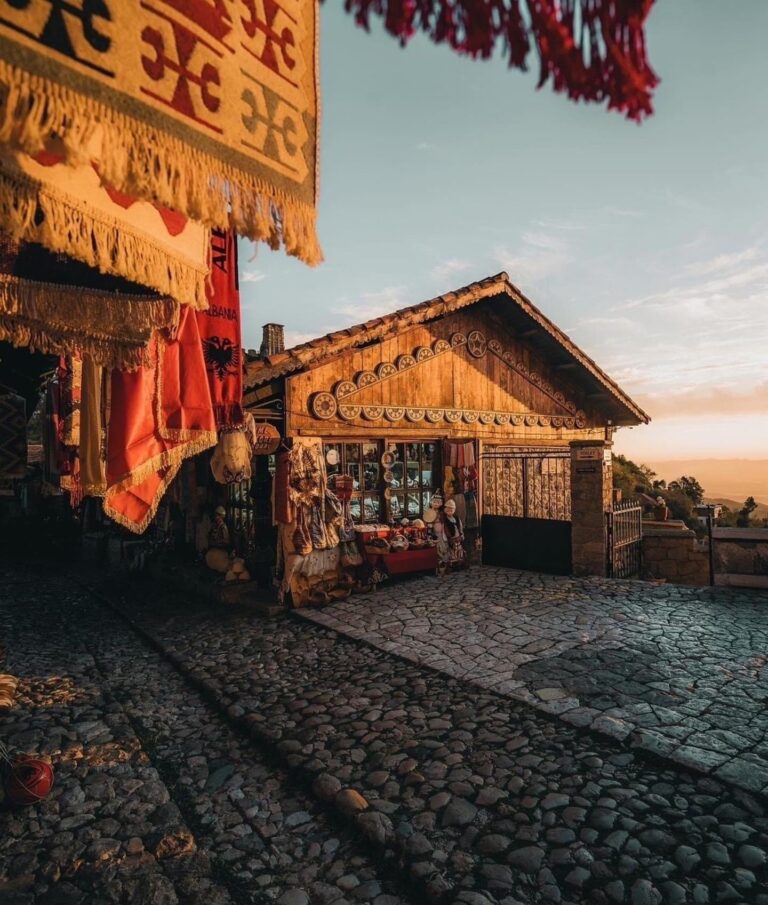

The historic city of Kruja is situated 32 km north of Albania’s capital, Tirana, nestled between Mount Sari Salltik and the Ishëm River, close to Tirana International Airport.
Perched 608 meters above sea level, Kruja offers a unique panorama of the surrounding area. The city’s significance is closely linked to the 25-year activities of Albania’s National Hero, Skanderbeg, who transformed Kruja into a bastion of relentless resistance against the Ottomans in the 15th century. The Gjergj Kastrioti Skanderbeg Museum, located within the castle’s walls dating back to the 5th and 6th centuries AD, is a highlight of the city.
Within the castle walls, visitors can also find the Ethnographic Museum. Near the castle entrance is the city’s old traditional market, the Bazar, dating back to the time of Skanderbeg. Tourists can find Albanian artisanal products including embroidered items, carpets, silver, copper, alabaster, filigree, and traditional clothing.
The National Historical Museum “Gjergj Kastrioti Skanderbeg”
The “Gjergj Kastrioti Skanderbeg” National Museum, also known as the Skanderbeg and Kruja Museum, is one of the most visited in Albania. The museum complex is spread across several areas, chronologically presenting the events.
Located at the main entrance of the Kruja Castle, the museum exhibits original objects, documents, and bibliographies, as well as authentic reproductions, testifying to the history of the Albanian people in the 15th century and beyond.
The Ethnographic Museum of Kruja
The Ethnographic Museum of Kruja is housed within the Kruja Castle, in the Toptani family house built in 1764. As a first-category cultural monument, the museum showcases a comprehensive view of the trades practiced in Kruja and across Albania, as well as the way of life 300 years ago.
The Sari Salltik Teqe is one of Kruja’s attractions. It was built in honor of Sari Salltik, a cleric of the Bektashi faith. Historical documents state that Sari Salltik left his mark in Kruja in the mid-1300s. His footprint is located in the teqe at the entrance of Kruja. In 1967, the communist regime destroyed this and other religious buildings across Albania. The Sari Salltik Teqe was rebuilt in 1991.
In Kruja, visitors encounter the history and culture that the Albanian people have experienced since the glorious era of Skanderbeg.
Customise your Albanian tour now!
Other Destinations
Get in touch with our friendly team
- contact@absolutealbania.com
- +355 67 40 567 56
